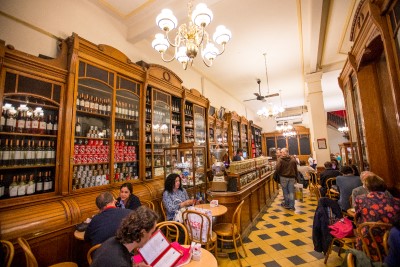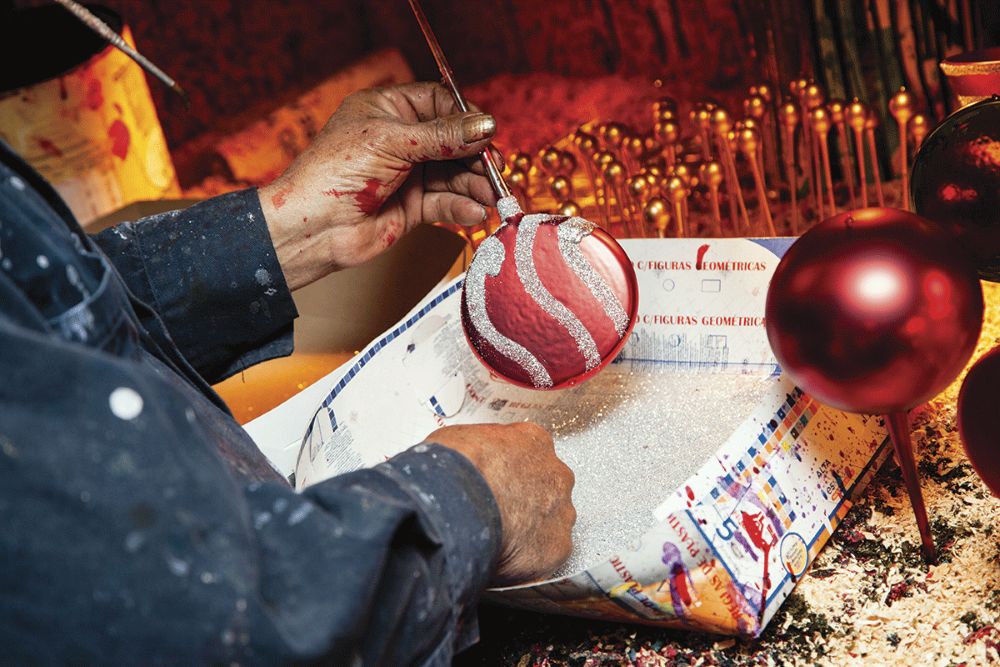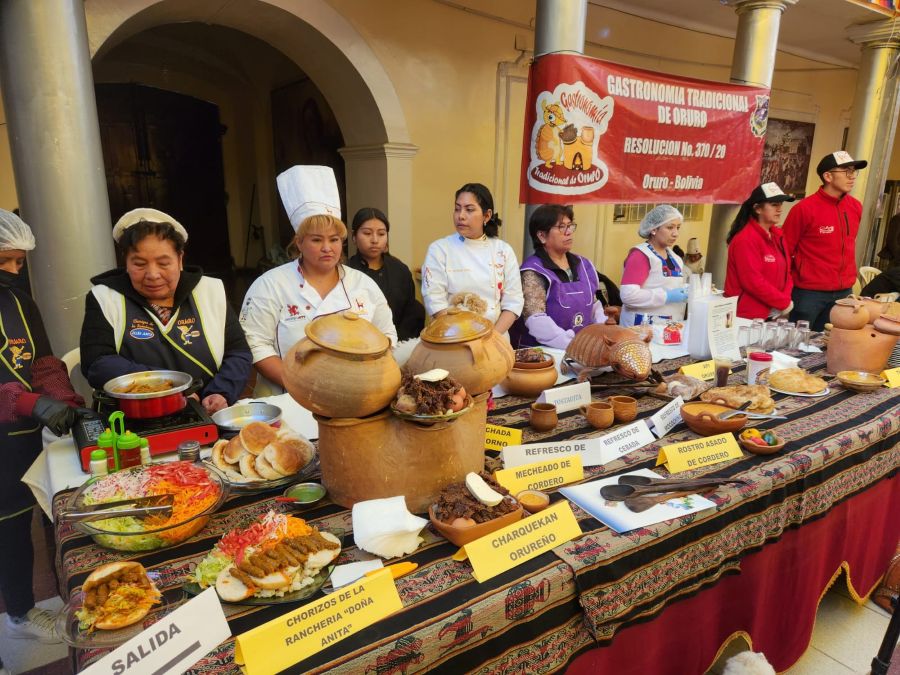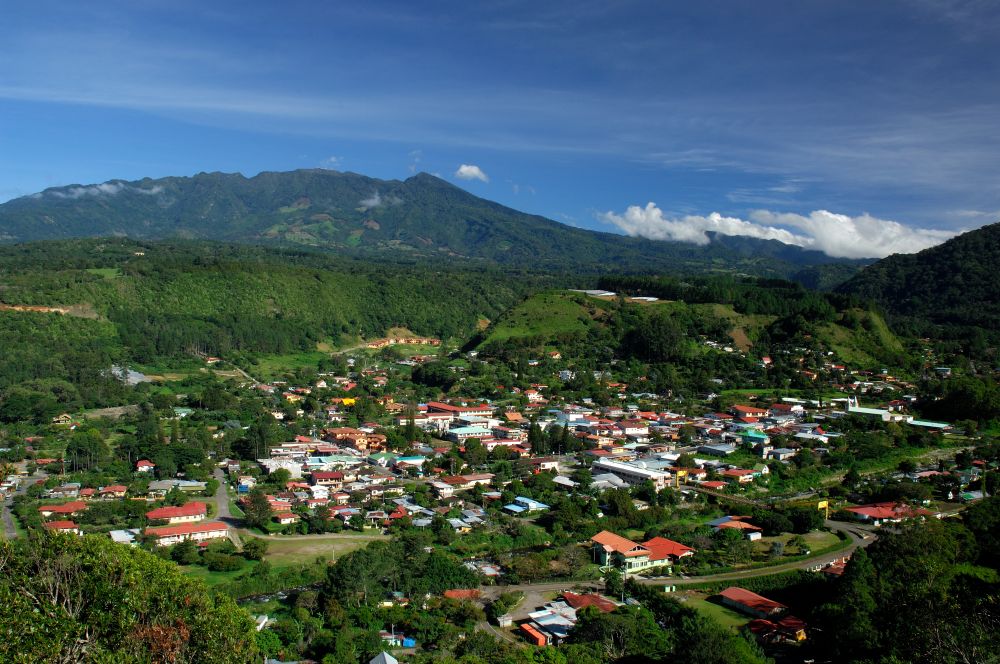Si l’endroit est ancien, avec beaucoup de bois, d’affiches et de photos, si les serveurs portent une chemise et un gilet, que le menu propose des medialunas : alors vous êtes dans un véritable café argentin !
Vous êtes assis à une vieille table en bois sur l’Avenida de Mayo. Votre chaise a probablement été le siège de personnages emblématiques, tels que Jorge Luis Borges, Federico García Lorca, Alfonsina Storni, et même Carlos Gardel. Un serveur à l’allure élégante pose délicatement le plateau sur la nappe. L’arôme inimitable d’une tasse de café qui vient d’être servie est captivant. Le goût succulent des « medialunas » (les croissants au beurre argentins) envahit vos papilles. Ces deux merveilles combinées créent une expérience magique pour le palais. Il n’y a pas de place pour le doute : vous êtes dans un café traditionnel de Buenos Aires dans toute sa splendeur.
Chaque 26 octobre est célébrée : la Journée des cafés de Buenos Aires ; en l’honneur du Café Tortoni, le plus ancien de la capitale. Fondé en 1858, il est situé juste en dessous de l’Academia Nacional de Tango. Entre 1926 et 1943, la célèbre fête populaire Peña del Tortoni, organisée par le célèbre peintre Benito Quinquela Martín, a eu lieu dans son sous-sol. Il a été le théâtre d’innombrables débats, de séances de lecture, de chants et de débats d’idées entre certaines des personnes les plus éminentes du monde.
Parmi les plus importants, vous trouverez également le Café de los Angelitos, Margot, 36 Billares et Las Violetas, qui étaient autrefois les points de rencontre de centaines de musiciens, de politiciens, d’écrivains et d’artistes en tout genre. En franchissant leurs portes, vous pourrez remonter le temps et imaginer les dizaines d’anecdotes, de secrets et d’histoires cachés dans leurs murs. L’endroit idéal pour pénétrer au cœur des traditions argentines, et partager des discussions et des rencontres tout en dégustant un excellent café.
Voici dix conseils pour les identifier :
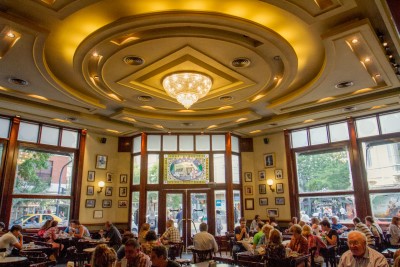
Ils présentent une conception architecturale ancienne
L’architecture remonte au siècle dernier. On peut encore y voir les mosaïques originales, les arches majestueuses, les couleurs pâles des enseignes, les ferronneries, les solides colonnes et les énormes lustres suspendus à des hauts plafonds.
Ils sont situés dans certains des quartiers les plus emblématiques de Buenos Aires
San Telmo, Monserrat, La Boca ou Recoleta : avec ses rues pavées qui respirent la culture, des quartiers entiers remplis d’arbres fougères, des bâtiments historiques et des coins qui reflètent encore l’âge d’or de Buenos Aires.
Ils ont reçu la distinction honorifique de « Bar Notable de la ville de Buenos Aires »
Ils ont sûrement un panneau juste à côté de la porte d’entrée avec une plaque indiquant Bar Notable (Café historique). Répartis dans plus de 25 quartiers de la capitale, ils sont près de 100 bars et cafés à avoir obtenu cette mention spéciale. La raison ? Ils sont bien plus qu’un simple endroit où prendre le petit-déjeuner ou prendre un café : ils font partie de l’identité du pays.
Ils sont liés à des activités culturelles historiques
Certains étaient le lieu d’irrésistibles clubs de lecture avec des écrivains célèbres, comme Cortázar ; d’autres étaient le témoin de réunions politiques clandestines. L’un d’eux a même vu Gardel signer son contrat de disque, et de nombreux autres artistes ont suivi.
Ils affichent une décoration unique
Des milliers de miroirs, de peintures et de photos décorent l’endroit, représentant ou montrant probablement des personnes célèbres qui ont fréquenté ces cafés. On peut également trouver de vieilles caisses et d’anciennes bouteilles d’eau gazeuse qui embellissent l’endroit.
Ils ont tous des écussons de clubs de football
C’est un classique dans les cafés, bars et restaurants de Buenos Aires : peu de pays sont aussi passionnés par ce sport que l’Argentine. Et cela se reflète aussi dans le décor : drapeaux suspendus, portraits et maillots de football de toutes les équipes nationales et, bien sûr, de l’équipe nationale argentine.
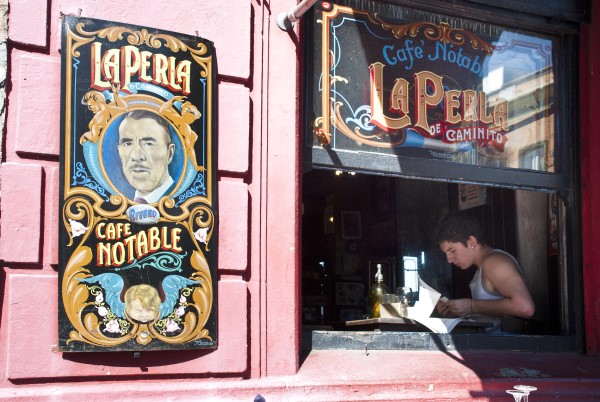
Ils ont des façades en bois
Très caractéristique de l’époque, à l’intérieur vous pourrez voir beaucoup de bois : sur les tables, les chaises, les murs, et même sur le comptoir.
Les serveurs portent des chemises, des gilets et des nœuds papillons
L’élégance d’une autre époque, toujours raffinés et avec des uniformes immaculés, ils portent généralement un badge avec leur nom. Maîtres jongleurs, ils sont experts pour charger des plateaux avec des centaines de tasses de café sans renverser une seule goutte à une vitesse étonnante.
Ils se souviendront aussi de votre commande par cœur sans l’écrire
Les serveurs argentins ont une mémoire étonnante et n’ont pas besoin d’écrire les commandes des clients. Certains se souviennent même du nom des clients habituels et vous diront ce qu’ils commandent habituellement sans même leur demander.
Le menu comprend des spécialités typiquement argentines
Des délices les plus classiques, comme le café au lait, le noisette ou le cappuccino, aux douceurs salées, comme les medialunas au beurre chaud, les churros farcis au dulce de leche ou le tostado (sandwich grillé au jambon et au fromage)… La gastronomie, une fois de plus, brille dans le pays du bout du monde, et se doit d’être savourée dans les grands cafés historiques.
Source : Visit Argentina

